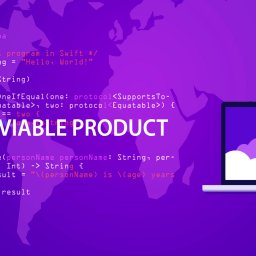Lean startup is a technique for developing products and businesses. The main objective is to reduce product development cycles by implementing an amalgamation of validating learning, iterative product releases and business-hypothesis-driven experimentation.
A lean startup is made of a few people or a small team that began the company because it is easy to manage everything and everyone. You initially get a few clients, and they are satisfied with your services, clearing all their payments on time and referring your services to other prospective consumers.
However, when you want to grow your startup with additional staff, clients and money to keep the record of, it can be very difficult to manage these aspects efficiently.
Without letting you waste too much money and time, we are presenting a list of three lean startup hacks to build a Billion-Dollar company.
Here is how:
1. Understanding Minimum Viable Product
Fundamental to lean startup viewpoint is the foundation that it is alright to issue a work in progress (WIP). The idea is to get a functioning, basic type of your contribution—a minimum viable product—out there as rapidly as possible, then collect reaction and modify it accordingly.
This approach was used by Hootsuite when they were getting off the ground in 2008. The tool they initially launched was very basic. It permitted users to log into numerous social media accounts from people at companies and one web page to simply share access to accounts. It did work but was not pretty. However, after one month of release, they received tens of thousands of users.
Once they came to know that they were onto something, they dedicated one-third of their 21-person team to the project. They started fixing user interface, strategizing, souping up features, developing marketing plans regarding tips to expand their user base and discovering financing alternatives. However, significantly, all this happened only after they had proof that Hootsuite was viable.
2. Build-Measure-Learn: Creating a Feedback Loop
A new important component of the lean startup tenet is unceasingly collecting and replying to feedback and data from customers. One of the first few things they did at Hootsuite was setting up a committed forum where users could vote and suggest for changes to their products.
Established on initial proposals, they created an Android app, added other social networks, enhanced security for business users, changed background and font colors and altered hundreds of other elements small and big.
How to Validate Your Startup Idea? – Step by Step Guide
These modifications went live as rapidly as they could write new code. This process is still practiced today. After a profanity-laced uproar about their user interface, they refurbished things from the starting point.
As they apply modern features, they compulsively followed the influence of attrition and user sign-ups. They kept the features that formed a net gain in users and ditched the rest. This “build-measure-learn loop”—reiterated unceasingly—is a key ethos of lean startup methodology.
3. Crunching the Numbers: Data-driven Decision Making
When the actual time came to begin monetizing Hootsuite in 2010, they utilized a data-driven approach. Their research suggested that the freemium model was the best method to progress. According to this technique, basic users kept on using the model for free, but they had to pay in order to apply advanced features. However, this raised a lot of questions:
- Which features should they charge money for?
- How much money should they charge?
- Should they have numerous pricing levels?
To get the answers, they dug into their database and found out that only 5% of their users managed all four accounts with Hootsuite. On paper, it made a lot of sense to develop their paywall around the criteria, charging only power users, leaving others customer, not at all affected. But would their customers rebel?
To play it safe, they decided to test things out on brand-new sign-ups. After some time period, they found out that having a paywall was not effective to slow the rate at which they added users. Equipped with that data, we rolled out the paid plan to their current base.
Although there was some confrontation, the consequences were awesomely positive. Many of their corporate clients essentially conveyed relief. Prices were fair and they were aware of having a good business model and would be around for the long heave to upkeep their efforts.
After five years, the tool they used together in their offices was now being used by 10 million people all over the world. It is developed constantly from its first repetition, which would be hardly identifiable to many of users, these days. And that is the method it should be.
They could have consumed those five years, and ineffable millions of dollars, gradually evolving the faultless social media tool to furtive beforehand springing it on the world—and it might have been a complete failure. As a substitute they went live early, they measured customer demand and they modified, over and over (and over) again.
The lean startup approach is hardly rocket science nevertheless, implemented thoroughly; it can turn a decent business into an excellent one and assist a non-starter hinge on feasibility.
IQVIS MVP Program
As one of the World’s leading app development company, we understand the pain points of modern startups and entrepreneurs. We’ve designed a simple framework – an MVP Program to get your startup prepared for the growth journey.







